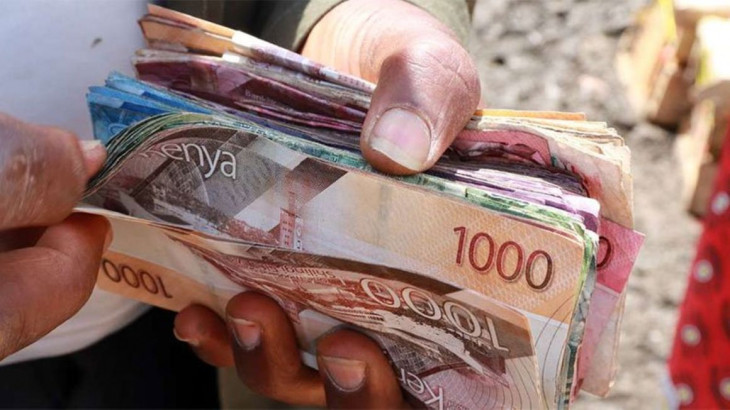De-dollarisation: Desperation or new world economic order

Global economy is witnessing a wave of countries making strategic moves to reduce their dependence on the US dollar—a trend widely known as de-dollarisation.
The movement has sparked discussions of a new multipolar economic order, a closer look suggests many of these shifts are being driven more by economic distress than by geopolitical strength.
Last week, Egypt announced two major deals that signal its participation in the global shift. First, the country successfully sold $479 million worth of debt denominated in Chinese Yuan, a major departure from the traditional US dollar-based borrowing structure.
Second, Egypt signed a bilateral agreement with China to sell copper directly in Yuan, bypassing the dollar altogether.
President William Ruto of Kenya has become a vocal critic of dollar dependence. During the 2023 AfCFTA Summit, Ruto questioned why African nations must use the dollar to trade with neighbouring countries.
“Why is it necessary for us to buy things from Djibouti and pay in dollars? There is no reason,” he said. “We are not against the US dollar—we just want to make trade easier among ourselves.”
These deals were praised by some as breakthroughs in global financial reform. “Countries are exploring alternative arrangements in response to dollar volatility and high interest rates,” noted a report from Watcher.Guru, which documents the growing list of nations moving away from the greenback.
But critics warn these moves are largely driven by necessity. Egypt, like many emerging economies, is struggling to access international debt markets due to high US interest rates and a strong dollar, which have made dollar-denominated debt prohibitively expensive.
With limited dollar reserves and swelling repayment obligations, many countries are turning to local currencies and alternative trade arrangements out of desperation.
There is also a broader push within Africa to embrace regional financial systems such as the Pan-African Payment and Settlement System (PAPSS) to conduct intra-African trade in local currencies.
Other than President Joe Biden’s sanctions on Russia, recent tariff wars by President Donald Trump have further alienated the United States, causing more countries to seek alternative payment corridors. Cryptocurrencies are emerging as potential contenders for the race. Media reports show that Russia has been using stablecoins and bitcoins to sell oil or receive oil payments to ease dollar shortage woes among its trading partners such as India and China.
Reuters reports show that Russia is using cryptocurrencies in its oil trade with China and India to skirt Western sanctions, according to four sources with direct knowledge of the matter.
International trade
While Russia has publicly encouraged the use of crypto and last summer passed a law to allow digital currency payments in international trade, its use in the country’s oil trade has not previously been reported.
Some Russian oil companies are using bitcoin, ether and stablecoins such as Tether to smooth the conversion of Chinese yuan and Indian rupees to Russian roubles, the sources said, adding that it is a small but growing part of Russia’s overall oil trade, which according to the International Energy Agency was worth $192 billion last year.
Yet while the list of countries joining the de-dollarisation conversation is growing, the underlying motivations remain deeply rooted in economic distress.
Many of these countries—particularly those in Africa, Latin America, and parts of Asia—are heavily indebted in US dollars. Rising interest rates in the US have pushed up borrowing costs, making debt servicing more difficult. For countries like Egypt, Sri Lanka, and Pakistan, dollar liquidity crises have made it almost impossible to access international credit markets.
“What’s common among these countries is that they do not have sufficient dollar reserves to service their debt or trade with the world,” said a regional economist familiar with African debt markets. “They are trying to find alternatives out of necessity, not strategy.”
Indeed, despite the growing rhetoric around de-dollarisation, the dollar’s share of global reserves actually increased in early 2025. A Reuters report this month revealed that the dollar’s share rose to 59 per cent, up from 58 per cent the year before. This increase signals the continued demand for the dollar, largely because most global debt—especially sovereign and corporate bonds—is still issued in dollars and must be repaid in dollars.
The idea that the US dollar is on the brink of collapse appears premature. One reason is the lack of a credible alternative.
The Chinese Yuan, often mentioned as the most likely contender, currently accounts for just about 2 per cent of global reserves. Moreover, China’s capital controls, lack of full currency convertibility, and tight political control over its financial system have deterred widespread adoption.
“It would be a bold move for China to allow borrowers of Chinese loans to repay in Yuan or their local currencies,” noted Watcher.Guru, “but that remains unlikely.” As long as China insists on repayments in dollars, the demand for greenbacks will remain strong.
Another signal that the dollar’s dominance remains intact is that even after China and Japan—once the largest holders of US debt—sold off more than 80 per cent of their US Treasury holdings, the global financial system absorbed the shock with minimal disruption.
Historically, global reserve currencies have held their dominant status for an average of 85 years. The US dollar has already passed the 100-year mark and shows little sign of immediate decline.














